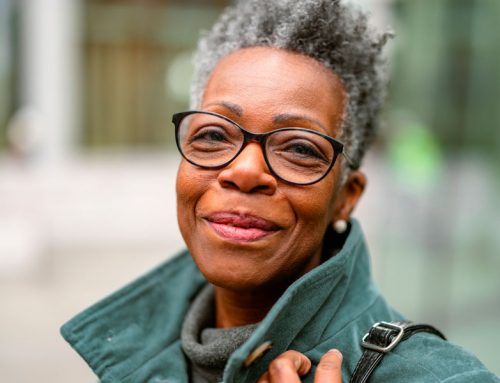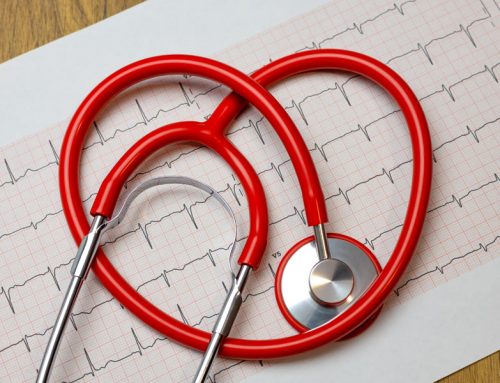
To live as long in life as we can and stay as young as we can, we need the protection of antioxidants. Coenzyme Q10 is, practically, a human immune system in itself. It quenches harmful free radicals and keeps them from damaging our cells and our DNA.
One theory to explain the process of aging is that there is an accumulation of oxidative damage through the years. Oxidative damage is the damage to cells and DNA and lipids that occurs as a result of an excess of reactive oxygen species (also called free radicals) beyond the body’s ability to neutralize the harmful free radicals. The free radical theory of aging presupposes higher free radical production and lower antioxidant protection in older adults. In accordance with this theory, the use of supplements with antioxidant effects such as Coenzyme Q10, selenium, vitamin C, vitamin E, and various carotenoids and flavonoids is desirable.
The synthesis of Coenzyme Q10
All mammals and, in fact, all organisms using aerobic respiration to produce energy synthesize some form of Coenzyme Q in their cells. In humans, Coenzyme Q10 is synthesized in the same biological pathway that produces cholesterol. That is why statin medications that inhibit the production of cholesterol also limit the synthesis of Coenzyme Q10. Logically, anyone taking a statin medication should be taking a Coenzyme Q10 supplement.
Age-related decline in Coenzyme Q10 synthesis
The human bio-synthesis of Coenzyme Q10 seems to peak in a person’s early 20’s and to decline with increasing age [Kalén 1989]. This age-related decline in the synthesis of Coenzyme Q10 is an argument for the taking of a good Coenzyme Q10 supplement daily.
The antioxidant function of Coenzyme Q10
In addition to its best known function as an essential co-factor in the cellular process of energy production, Coenzyme Q10 serves as an important lipid-soluble antioxidant both in the mitochondrial membranes and the cells’ plasma membranes and in lipoproteins in plasma. In both the mitochondria and in the plasma membranes, Coenzyme Q10 is continuously cycling back and forth between its oxidized form and its reduced form.
What are the mitochondria and why do they need Coenzyme Q10?
The mitochondria (singular: mitochondrion) are the small bean-shaped specialized structures inside most cells that are the site of the process of energy production. Coenzyme Q10 is known to be available in the mitochondria of healthy people at concentrations that are 10 times the concentrations of the electron transfer chain proteins in the mitochondria [Lopéz-Lluch 2010].
Coenzyme Q10’s function in the mitochondria
Coenzyme Q10 has a dual function in the mitochondria. It is essential in the process of cellular energy production, and, because the process of energy production necessarily results in the production of free radicals, some or many of them harmful, Coenzyme Q10 is needed to provide antioxidant protection.
Higher consumption of Coenzyme Q10 in antioxidant activity with increasing age
One concern needing further investigation is the extent to which the consumption of Coenzyme Q10 in the mitochondria by free radicals increases with increasing age. One study has shown that the ratio of the oxidized Coenzyme Q10 (the ubiquinone form) to the reduced Coenzyme Q10 (the ubiquinol form) increases with increasing age [Wada 2007]. That is to say, the reduced form of Coenzyme Q10 becomes increasingly oxidized by interaction with free radicals.
The higher ratio of ubiquinone to ubiquinol in older adults may well be a bio-marker for increasing oxidative stress in older adults. The changing ratio is not, however, an argument for taking a Coenzyme Q10 supplement in the relatively untested and undocumented ubiquinol form as opposed to taking a Coenzyme Q10 supplement in the extensively tested and documented ubiquinone form.
The Coenzyme Q10 that is absorbed from either of the two types of supplements will be converted to the antioxidant form, the ubiquinol form, when the Coenzyme Q10 passes from the absorption cells in the small intestine into the lymph system and slowly makes it way to the blood circulation.
Enzymes convert ubiquinone to ubiquinol
Researchers have identified several enzymes that facilitate the regeneration of the spent Coenzyme Q10 molecules that have neutralized free radicals. That is to say, the Coenzyme Q10 in its antioxidant form ubiquinol quenches free radicals. In so doing, it becomes Coenzyme Q10’s oxidized form ubiquinone. Certain enzymes reduce the ubiquinone molecules to ubiquinol molecules, preparing them to serve again as antioxidants [Lopéz-Lluch 2010]:
- NAD(P)H-dehydrogenase
- NQO-1 oxidoreductase
- Lipoamide dehydrogenase
- Thioredoxin reductase
- Glutathione reductase
Coenzyme Q10 and selenium in combination
The selenium-dependent selenoenzyme thioredoxin reductase is important in the reduction of ubiquinone Coenzyme Q10 to the antioxidant form ubiquinol [Xia 2003]. The results of the KiSel-10 study using a daily supplement combination of Coenzyme Q10 (in the form of ubiquinone) and organic selenium yeast have shown that combined action by Coenzyme Q10 and selenium protect healthy elderly adults against oxidative damage.
Coenzyme Q10’s function outside the mitochondria
In the plasma membrane.
As noted above, inside our cells in the mitochondria, Coenzyme Q10 performs a vital dual function: co-factor in the process of energy production and antioxidant quenching free radicals.
Our cells themselves are covered by plasma membranes, which are back-to-back double layers of phospholipids. In some places, the plasma membrane is covered by cholesterol molecules and various proteins. The plasma membrane serves as the regulator of which molecules are let into and out of the cell.
In the plasma membrane, Coenzyme Q10 is active in antioxidant protection of the cell against oxidative damage. Coenzyme Q10 acts both as an antioxidant protecting the plasma membrane against lipid peroxidation and as a re-generator of the antioxidant vitamins ascorbate and alpha-tocopherol.
Lipid peroxidation is a natural process in the body in which harmful free radicals steal electrons from the lipids in the plasma membrane, resulting in the degradation of the lipids. Coenzyme Q10, the premier lipid-soluble antioxidant, works to block this degradation of lipids.
In the cytosol.
Xia et al suggest that the selenium-dependent thioredoxin reductase is the predominant enzyme for the reduction of ubiquinone in the cytosol. The cytosol is the fluid (watery) part of the jelly-like cytoplasm found inside the cell surrounding the nucleus. Ubiquinol protects the various organelles and particles suspended in the cytosol from oxidative damage.
Thioredoxin reductase is directly involved in the neutralization of the hydrogen peroxide and lipid hydroperoxide free radicals in the cytosol. In addition, thioredoxin reductase is involved in the regeneration of the antioxidants ascorbate and lipoic acid [Xia 2003].
In the blood plasma.
Another important role of Coenzyme Q10 is the antioxidant defense of lipoproteins in the blood plasma. Lipoproteins are particles of fat surrounded by a phospholipid bi-layer. Lipoproteins transport triglycerides and cholesterol in the blood to all bodily tissues. The reduced form of Coenzyme Q10, the ubiquinol form, seems to be the most effective antioxidant protecting the lipoproteins [Stocker 1991]. Supplementation with Coenzyme Q10 has been shown to increase the antioxidant protection in circulating lipoproteins [Mohr 1992].
Coenzyme Q10 absorption relatively low
Normal plasma Coenzyme Q10 status in healthy individual ranges from 0.5 to 1.5 micrograms per milliliter [Felker 2016]. Human Coenzyme Q10 deficiency conditions begin to appear whenever the Coenzyme Q10 status in muscle or fibroblasts sinks 30% below the healthy status level [Montero 2007].
Normal skeletal muscle CoQ10 levels tend to be approximately 0.36 micrograms per milliliter; normal heart muscle CoQ10 levels tend to be 0.43 micrograms per milliliter on average [Karlsson 1990]. Exercise and supplementation may increase these levels somewhat; without proper exercise and diet, they can decrease markedly. Any Coenzyme Q10 concentrations in the muscle tissue that are 70% or less of the normal levels indicate deficiency and distress.
Summary
Dual function.
The first and primary function of Coenzyme Q10 appears to be in the synthesis of energy. The ubiquinone form of Coenzyme Q10 is the form synthesized in the body; it is the form needed for the bio-energetic function. The second very important function of Coenzyme Q10 is to supply the body’s needs for ubiquinol as an antioxidant to protect all components of the cell and body.
Constant cycling of redox mechanism.
The constant cycling between the ubiquinone form and the ubiquinol form shows the importance of the redox mechanism of Coenzyme Q10. Deficiencies of Coenzyme Q10 and/or the enzymes that convert ubiquinone to ubiquinol have major effects on the health and quality of life of us humans.
No known toxicity.
Fortunately, Coenzyme Q10 has no known toxicity as do all classical drugs. Coenzyme Q10 is safe to take as a supplement, and it is affordable. Clinical trials have shown the efficacy of Coenzyme Q10 in improving the symptoms and survival of heart failure patients.
Special inter-relationship between Coenzyme Q10 and selenium
It seems that there is a special inter-relationship between Coenzyme Q10 and selenium. Working together, they reduce the extent of oxidative damage to cells and DNA and lipids in elderly adults. In the KiSel-10 study, 200 milligrams of Coenzyme Q10 and 200 micrograms of a high selenium yeast preparation taken daily for four years yielded statistically significant health benefits:
- Reduced cardiovascular mortality
- Reduced oxidative stress and reduced inflammation
- Reduced hospital stays
- Better quality of life
Sources:
Alehagen, U., Johansson, P., Björnstedt, M., Rosén, A., & Dahlström, U. (2013). Cardiovascular mortality and N-terminal-proBNP reduced after combined selenium and coenzyme Q10 supplementation: a 5-year prospective randomized double-blind placebo-controlled trial among elderly Swedish citizens. International Journal of Cardiology, 167(5), 1860-1866.
Alehagen, U., & Aaseth, J. (2015). Selenium and coenzyme Q10 interrelationship in cardiovascular diseases–A clinician’s point of view. Journal of Trace Elements in Medicine And Biology, 31157-162.
Alehagen, U., Aaseth, J., & Johansson, P. (2015). Reduced Cardiovascular Mortality 10 Years after Supplementation with Selenium and Coenzyme Q10 for Four Years: Follow-Up Results of a Prospective Randomized Double-Blind Placebo-Controlled Trial in Elderly Citizens. Plos One, 10(12), e0141641.
Folkers, K., Vadhanavikit, S., & Mortensen, S. A. (1985). Biochemical rationale and myocardial tissue data on the effective therapy of cardiomyopathy with coenzyme Q10. Proceedings of The National Academy of Sciences of The United States of America, 82(3), 901-904.
Kalen A, Appelkvist EL, Dallner G. Age-related changes in the lipid compositions of rat and human tissues. Lipids. 1989;24(7):579–584.
Karlsson, J., Diamant, B., Folkers, K., Edlund, P.-O., Lund, B. & Theorell, H. (1990) Skeletal muscle and blood CoQ10 in health and disease. Lenaz, G. Barnabei, O. Rabbi, A. Battino, M. eds. Highlights in Ubiquinone Research :288-292 Taylor & Francis London, UK.
López-Lluch, G., Rodríguez-Aguilera, J. C., Santos-Ocaña, C., & Navas, P. (2010). Is coenzyme Q a key factor in aging?. Mechanisms Of Ageing And Development, 131(4), 225-235.
Mohr, D., Bowry, V. W., & Stocker, R. (1992). Dietary supplementation with coenzyme Q10 results in increased levels of ubiquinol-10 within circulating lipoproteins and increased resistance of human low-density lipoprotein to the initiation of lipid peroxidation. Biochimica et Biophysica Acta, 1126(3), 247-254.
Mortensen, S. A., Rosenfeldt, F., Kumar, A., Dolliner, P., Filipiak, K. J., Pella, D., & Littarru, G. P. (2014). The effect of coenzyme Q10 on morbidity and mortality in chronic heart failure: results from Q-SYMBIO: a randomized double-blind trial. JACC. Heart Failure, 2(6), 641-649.
Stocker, R., Bowry, V. W., & Frei, B. (1991). Ubiquinol-10 protects human low density lipoprotein more efficiently against lipid peroxidation than does alpha-tocopherol. Proceedings of The National Academy Of Sciences of The United States of America, 88(5), 1646-1650.
Wada, H., Goto, H., Hagiwara, S., & Yamamoto, Y. (2007). Redox status of coenzyme Q10 is associated with chronological age. Journal of The American Geriatrics Society, 55(7), 1141-1142.









Leave A Comment